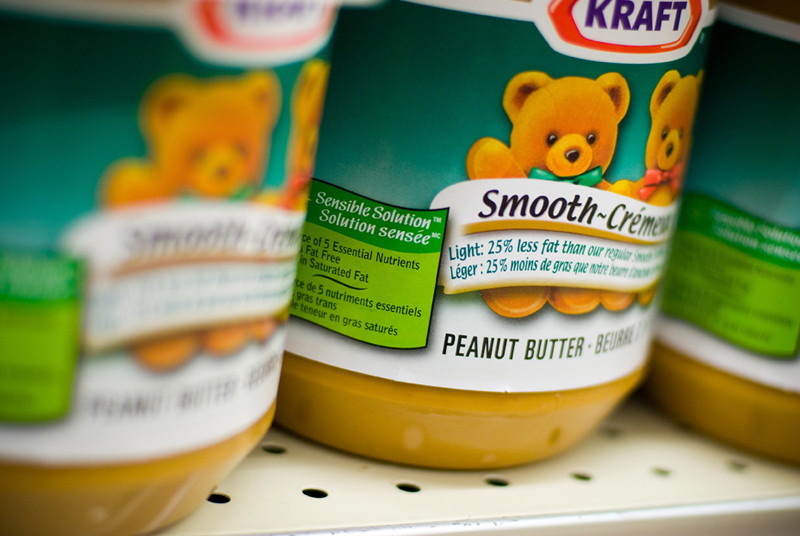Who says health food is healthy?
Misleading claims on food products are putting our health in danger
As rates of illness and disease rise all over the country, the health of Canadians everywhere is an issue we must address. What we eat strongly influences our improving or deteriorating health, but with so many food products to choose from, it can be difficult to know which ones are healthy.
Food companies like Kraft and PepsiCo, as well as organizations like the Heart and Stroke Foundation, understand this problem. They offer a wide range of products that they tout as healthier options and they give these products their stamp of approval with special programs. Kraft has the Sensible Solutions flag, PepsiCo has the Smart Spot label, and the Heart and Stroke Foundation has the Health Check.
But are the foods these companies approve of really healthy for us?
On most food products there are four key aspects to the packaging: the name of the product and its brand; the claims on the front label; the nutrition facts table; and the ingredients list.
When faced with dozens of different types of peanut butter, most people don’t know where to begin. This is why consumers gravitate towards brands they recognize and labels that promise health benefits.
This presents food companies with the opportunity to strategically splash health claims across packaging. Everything from “0 Trans Fat” and “With Added Vitamin C” to “Reduced Sodium” and “Only 100 Calories” grab consumers’ attention, and these statements are often incentive enough to make people buy the product.
Consumers rely on these companies and much of the food we eat is either endorsed by PepsiCo or Kraft.
But food companies are an industry, and this fact leads to the question: is consumer health as important as promoting products and making money?
Mary Pan, assistant marketing manager for the Health and Wellness Program of PepsiCo Canada, said that Smart Spot is “not intended to improve people’s health.”
Rather it is a tool that should be utilized to help people in their busy lifestyles, she said.
But even if the companies are making note of this, consumers might not realize there is a distinction between “healthy” and “healthier.”
Kerry McLeod, a sports nutrition certified instructor, knows first-hand that consumers often do not make this distinction.
McLeod took an interest in eating nutritiously after becoming pregnant. Before her pregnancy she was a self-described “junk food junkie.” She started examining food labels and wrote a book to share her findings with others. The Last Diet Book Standing was written with the consultation of nutrition professionals.
McLeod actively works to teach consumers how to sift through the claims and understand which brands are both tasty and healthy through her website, eBrandAid.com.
Because it is a non-profit program without any political parties, governmental organizations or food companies backing it, eBrandAid.com presents consumers with the objective truth behind health claims. It works to debunk the myths that major food companies support and reminds consumers that just because a food company is well-known and has a supposedly “healthier” line of products, it doesn’t mean that these products are in fact healthy.
This issue is even prevalent in the non-profit Heart and Stroke Foundation’s Health Check program.
A study conducted in March 2008 showed that “90 per cent of consumers understand the Health Check logo to mean ‘healthy,’ ‘good for you’ and ‘approved by the Heart and Stroke Foundation.’”
Although high amounts of sodium are associated with increased health risks leading to strokes and high blood pressure, the Health Check can be found on food products with extremely high levels of sodium. Canned soups with 650mg of sodium per serving still bear the Health Check symbol even though they account for a quarter of our recommended amount of daily sodium.
Dinner entrées are allowed to bear the Health Check symbol with 960mg of sodium per serving.
The Health Check program is updating their nutrition criteria as of November 2010. Soups will soon have to contain less than 480mg of sodium; and dinner entrees, less than 720mg.
Whether or not other organizations follow suit remains to be seen.
“ Mary Pan, assistant marketing manager for the Health and Wellness Program of PepsiCo Canada, said that Smart Spot is “not intended to improve people’s health.”
Sugar: Truly too good to be healthy
Another major problem with the nutrition information on food products is that consumers lack an understanding of the very important distinction between natural and added sugars. Although consumers pay attention to the nutrition facts table on packages, they often overlook the ingredients list. This is the one place on the package that indicates the type of sugar that is in the product.
McLeod notes that “more than 700 Kraft products carry the [Sensible Solutions] flag, and no where in their criteria does it talk about what the ingredients must contain.”
This means that artificial sweeteners can be used to lower the sugar count and consequently lead consumers to believe an unhealthy product is actually healthy, she said.
Some artificial sweeteners have been linked to cancer, thus making them dangerous to our health. Kraft is by no means the only food manufacturer that incorporates this marketing device; nearly every food industry operates in this manner.
The Heart and Stroke Foundation is one organization that does distinguish between natural and added sugars with Health Check. Their guidelines require products like cereal to have six grams of sugar or less per serving, excluding sugar from pieces of real fruit.
But when you take into consideration that a teaspoon of sugar equals four grams, and that a serving is sometimes a small half-cup, consumers are likely to have two or more servings in one sitting without realizing it. That is a lot of added sugar!
Trans fat: Your backstabbing ex-friend
As with natural and added sugars, there is also confusion about trans fat.
Trans fat occurs naturally in products such as butter and this is not the kind of trans fat that we need to avoid. It is the synthetically produced trans fat, also known as hydrogenated or partially hydrogenated oil, that we should eliminate from our diet.
Trans fat is related to elevated risks of heart disease and Type 2 Diabetes.
A Nurses’ Health Study determined that men who increase their trans fat consumption by just two per cent increase their risk of heart disease by a colossal 25 per cent.
Trans fat is highly dangerous to our health and food manufacturers frequently attempt to cover up their use of it.
eBrandAid.com’s McLeod said it’s dangerous that regulations on trans fat can allow for companies to claim their product is “trans fat free,” when in fact the product has a very small amount of trans fat.
In accordance with Health Canada’s regulations, a food product must contain less than 0.2g of trans fat to be classified “trans fat free.” In the United States there are similar regulations.
McLeod said this should be illegal because we often eat far more than just one serving at a time.
“You walk away not even realizing you just ingested one gram of trans fat. The FDA [U.S. Food and Drug Administration] made the claim that there are no safe levels of trans fats, so why would they allow food manufacturers to mislead people by putting that on their package?”
For example, a box of cookies could list the serving size as one cookie. If it is represented as being trans fat free but actually has 0.2g of trans fat, and you consistently have three cookies at a time every day, in a month you will have consumed roughly 14g of trans fat without realizing it. And who eats just one cookie every few weeks?
PepsiCo’s Pan said that for a product to be deemed worthy of Smart Spot it must contain no trans fats.
However upon closer inspection of the ingredients in many of their food products, both hydrogenated oil and partially hydrogenated oil were listed. As the Nurses’ Association’s study illustrates, these tiny amounts of trans fats most certainly do not contribute to a food product as being a “healthier option.”
Leading us astray
While food manufacturers make ethically questionable choices in their marketing strategies, we also must look to the regulations that government places on these food manufacturers.
Why has the government given their consent for these food manufacturers to have such misleading claims on their packaging? To ensure better health for all Canadians it is necessary to take proactive measures.
Carol Dombrow, a registered dietitian working with the Heart and Stroke Foundation, said it would be better for consumers if there was only one program with a definitive set of nutrition guidelines. This would clear up confusion about food labeling.
Dombrow sees the future of health products as positive and said food manufacturers are moving in the right direction.
“We are seeing [these companies take] an interest in nutrition. There is also a significant per cent of manufacturers that reformulate their products to meet the Health Check criteria.”
Some food manufacturers might be interested in reformulating their products to meet the guidelines recommended by Health Canada and the Heart and Stroke Foundation, but the motives behind this interest are important.
It can be easy to find ways around some of the guidelines. For example, it’s easy to make the serving size much smaller than what we normally eat.
The obesity epidemic across North America is forcing people to look for ways to improve their health. Recognizing this, food manufacturers attempt to appeal to consumers, but if we do not understand how to read nutrition labels, we can easily be duped by the loopholes of marketing.
We can increase our own awareness by speaking with registered dietitians and making use of resources such as eBrandAid.com.
We can enhance our understanding and be better informed by reading nutrition labels and ingredients lists.
These resources enable us to take the necessary steps to improve our health and the health of our families, in spite of the deceptive marketing strategies lurking in the grocery store.
Published in Volume 63, Number 25 of The Uniter (March 26, 2009)







